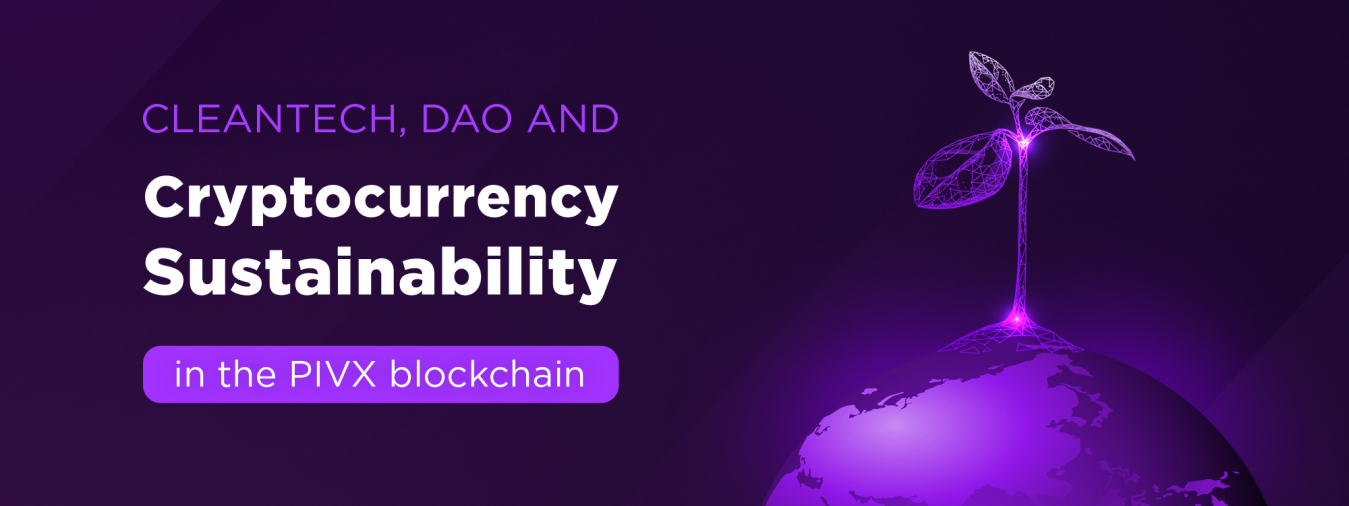Recently, an article was published comparing the energy expenses of the global banking industry, Bitcoin mining, and the user/financial protection project PIVX. The gist of it is simple enough; it takes energy to make money work. In the case of the legacy banking industry, it takes enormous amounts of costly power. However, this time we’re changing course to discuss an important editorial comment in that article;
Editors Note: “For transparency – the PIVX project is community run and managed – by a DAO (Decentralized autonomous organization). This is not an endorsement of DAOs which can behave very differently.”
What stuck out to me was the note, “This is not an endorsement of DAOs which can behave very differently.” While indeed a true statement, as there have been many prior instances of DAO’s gone awry (link), I’d like to showcase a win using the Decentralized Autonomous Organization model. In fact, this model is rapidly becoming a new standard, so much so that Wyoming just gave it legal status. It’s what PIVX uses to govern its global project and potentially (explanation below) its path to being a total carbon neutral- if not negative- currency.
For those who are new to the term PIVX, here’s the short of it. The four letters stand for Protected Instant Verified Transaction. The overall project is an open-source and decentralized peer-to-peer currency. Further, it uses advanced user data protection features, community governance mechanisms, and the Proof of Stake consensus algorithm.
Employing a DAO
This brings us back to the topic of a DAO. PIVX, as a project, uses a community governance mechanism to manage itself. There are no leaders, per se, so it’s up to the members to decide how the project goes forward. While those attached to the project can’t adjust the price of the PIVX token directly (a PIV), they can support projects with a vote and open discussions that could affect the price down the road.
The PIVX DAO supports itself. The members who have the right to vote and allow changes are the same ones who own a stake in the project. To vote on proposals, be it a path to allocate project funds or perhaps to suggest a change to how the community communicates (right now, it’s mostly on Discord), you must own a Masternode. To do that, you need at least 10,000 PIV. For every 10K PIV one owns, they can have a Masternode, one vote for each.
While there is a known number of Masternodes (1,596 as I write this), what’s not necessarily known is who owns them. Unless someone chooses to tell the world they have one; nobody knows who is casting a vote on a given proposal. With members all over the globe, it’s not only an anonymous autonomous organization; it truly is decentralized.
Cleantech
By virtue of the minimum technology needed to run the PIVX network, it could be thought of as cleantech. While some may consider the term an oxymoronic word in itself, the truth is, there is almost no such thing as true “cleantech.” Without getting too deep into the semantics of that rabbit hole, let me explain my stance. While a wind farm is often considered cleantech, note that it took large amounts of resources and energy to make just one wind turbine. The same goes for computers or your phone that we use every day.
However, the PIVX network (the ENTIRE global network) can be run on nothing more than a single board microprocessor, such as a Raspberry Pi, at its very best effort to minimize its impact. This is significant. Not to rehash the last article too much, but a Raspberry Pi 4 costs roughly $13.40 to operate annually (in the Seattle, WA (USA) area). As a quick comparison, it costs about $630,000 (USD) to run the entire global PIVX network. By contrast, it costs Bitcoin $12,000,000,000 (USD, yes Billion) to run their network. This cost is not borne by the organizations either; the burden is on the end-users. Or sometimes, in the case of Bitcoin mega-farms, the local community.
Cryptocurrency can be sustainable
It’s not a matter of if, but when cryptocurrency will become the default means of financial transactions over paper money or traditional credit cards. This is where PIVX, cleantech, and sustainability converge to become the future of PIVX and the entire cryptocurrency landscape. While PIVX (and many other projects) use Proof of Stake (PoS) to do the computational work to maintain the network, others, such as Bitcoin (really, I’m not trying to pick on them), use the protocol of Proof of Work. Using PoS reduces the need for larger computers and lets a network remain energetically minor.
PIVX is currently on a path to becoming a model of sustainable crypto. One that can work into the future, providing citizens with the ability to control their financial visibility. While I haven’t personally put my cards out there for all to see, I want to see PIVX become a carbon-negative organization in the near term. If anything, it will showcase the fact that it can be done.
I’m going to go out on a limb here to say that PIVX is a Cleantech DAO and a financial protection cryptocurrency product. One that is moving forward to be a leader in the fintech/crypto sector, showing others how a DAO should behave: responsibly.
